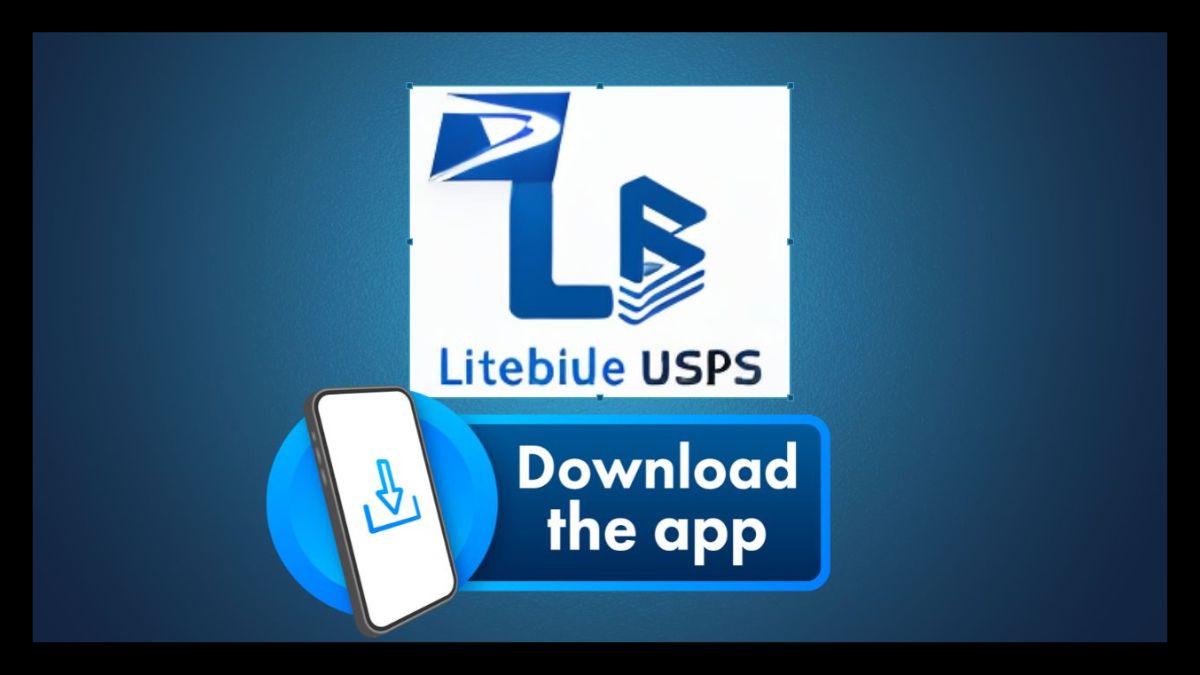Technology
LiteBlue USPS: Streamlining Postal Services for Employees

In the fast-paced world of postal services, efficiency and organization are crucial for delivering mail promptly and reliably. LiteBlue USPS stands out as a vital tool in streamlining postal operations, providing USPS employees with a centralized platform for managing various aspects of their work. From scheduling to communication and access to resources, LiteBlue plays a pivotal role in enhancing the efficiency and effectiveness of postal services across the United States.
LiteBlue USPS is an online portal designed specifically for employees of the United States Postal Service (USPS). It serves as a comprehensive platform that enables USPS personnel to access a wide range of tools and information related to their work. From managing work schedules to accessing benefits and policies, LiteBlue offers a one-stop solution for postal employees to streamline their daily tasks and responsibilities.
History of LiteBlue USPS
The development of LiteBlue can be traced back to the need for a more efficient and centralized system for managing postal services. With the increasing volume of mail and the complexity of postal operations, USPS recognized the importance of leveraging technology to streamline its processes. Thus, LiteBlue was born, evolving over the years to become the robust platform it is today.
Features and Benefits of LiteBlue
LiteBlue offers a plethora of features aimed at simplifying the work experience for USPS employees. One of its primary benefits is the array of employee management tools it provides, allowing workers to view and manage their schedules, request time off, and track their benefits. Additionally, LiteBlue serves as a hub for accessing work-related resources such as policies, manuals, and training materials, ensuring that employees have easy access to the information they need to perform their jobs effectively.
How LiteBlue Streamlines Postal Services
One of the key ways in which LiteBlue streamlines postal services is through its efficient scheduling and shift management capabilities. Employees can easily view their schedules, swap shifts with colleagues, and request time off, reducing administrative overhead and ensuring optimal staffing levels. Furthermore, LiteBlue simplifies access to benefits and policies, allowing employees to review their healthcare plans, retirement options, and other important benefits with ease. Additionally, LiteBlue facilitates communication between employees and management, providing channels for feedback, announcements, and updates.
Security and Privacy Measures
Given the sensitive nature of the information stored on LiteBlue, security and privacy are top priorities for USPS. The platform employs robust data protection protocols to safeguard employee information, including encryption, access controls, and regular security audits. Moreover, LiteBlue features secure login systems that require multi-factor authentication to prevent unauthorized access and protect against potential threats.
User Experience and Interface
LiteBlue boasts an intuitive and user-friendly interface designed to enhance the overall user experience. With its straightforward navigation and clear layout, employees can quickly find the tools and information they need without unnecessary hassle or confusion. Furthermore, LiteBlue incorporates accessibility features to accommodate users with diverse needs, ensuring that everyone can utilize the platform effectively.
LiteBlue Mobile App
In addition to its web-based portal, LiteBlue also offers a mobile app for on-the-go access to postal services. The app extends the functionality of LiteBlue, allowing employees to check their schedules, submit time-off requests, and communicate with colleagues from their smartphones or tablets. This mobile accessibility enhances convenience and flexibility for postal workers, enabling them to stay connected and productive wherever they are.
Employee Feedback and Satisfaction
LiteBlue actively solicits feedback from users to continuously improve its services and address any issues or concerns. Through surveys, polls, and other feedback mechanisms, USPS gathers valuable insights from employees about their experiences with LiteBlue and identifies areas for enhancement. Overall, employee satisfaction with LiteBlue is high, with many workers citing its convenience, efficiency, and user-friendly interface as major benefits.
Integration with Postal Operations
LiteBlue is tightly integrated with other USPS systems, allowing for seamless coordination and collaboration across various departments and functions. By syncing data and processes between different systems, LiteBlue helps optimize postal services efficiency and ensure smooth operations. Whether it’s tracking packages, managing deliveries, or processing payments, LiteBlue plays a crucial role in keeping USPS operations running smoothly.
Challenges and Solutions
While LiteBlue has proven to be a valuable asset for USPS, it is not without its challenges. Technical glitches, system outages, and other issues can occasionally disrupt service and frustrate users. However, USPS is committed to addressing these challenges promptly and proactively, investing in system upgrades, infrastructure improvements, and enhanced support services to ensure the reliability and stability of LiteBlue.
Future Developments and Enhancements
Looking ahead, USPS is exploring opportunities to further enhance LiteBlue and adapt it to meet the evolving needs of postal services. This includes potential upgrades to the platform’s features and functionality, as well as integration with emerging technologies such as artificial intelligence and machine learning. By staying at the forefront of innovation, LiteBlue aims to continue driving efficiency and productivity in the postal industry.
LiteBlue Support and Resources
In addition to its online platform, LiteBlue provides comprehensive support and resources for USPS employees. This includes a dedicated helpdesk service staffed by knowledgeable support agents who can assist with any questions or issues users may encounter. Furthermore, LiteBlue offers a wealth of training materials, guides, and tutorials to help employees make the most of the platform and optimize their work processes.
Success Stories and Case Studies
Across the country, USPS employees have experienced firsthand the benefits of LiteBlue in streamlining postal services and improving their work experience. From mail carriers to sorting facility workers, LiteBlue has become an indispensable tool for managing schedules, accessing resources, and communicating with colleagues. Real-life success stories and case studies highlight the tangible impact that LiteBlue has had on postal operations, from reducing administrative overhead to improving employee morale and satisfaction.
LiteBlue in the Digital Transformation of USPS
As USPS continues its journey toward digital transformation, LiteBlue remains at the forefront of modernizing postal services. By leveraging technology to streamline processes, enhance communication, and improve efficiency, LiteBlue plays a crucial role in shaping the future of USPS. Moreover, LiteBlue contributes to sustainability efforts by reducing paper consumption, minimizing waste, and optimizing resource utilization.
Conclusion
LiteBlue USPS stands as a testament to the power of technology in revolutionizing postal services. From its humble beginnings to its current status as a cornerstone of USPS operations, LiteBlue has transformed the way postal employees work and interact. With its array of features, user-friendly interface, and commitment to security and privacy, LiteBlue continues to drive efficiency, productivity, and innovation in the postal industry.
FAQs (Frequently Asked Questions)
Is LiteBlue accessible to all USPS employees?
Yes, LiteBlue is available to all employees of the United States Postal Service, including mail carriers, clerks, and administrative staff.
Can employees access LiteBlue from mobile devices?
Absolutely! LiteBlue offers a mobile app that allows employees to access the platform from their smartphones or tablets, providing flexibility and convenience.
How does LiteBlue contribute to employee satisfaction?
LiteBlue simplifies many aspects of the work experience for USPS employees, from managing schedules to accessing benefits, leading to increased satisfaction and morale.
Is LiteBlue secure?
Yes, LiteBlue prioritizes security and privacy, employing robust measures such as encryption and multi-factor authentication to protect employee data.
What are some future developments we can expect from LiteBlue?
USPS is continuously exploring ways to enhance LiteBlue, including potential upgrades to its features and integration with emerging technologies to further improve postal services.
Technology
Top Features to Look for in a Hollow Fiber Membrane Spinning Machine

The requirement for hollow fiber membrane spinning machines is growing at a rapid pace due to their pivotal role in water purification, pharmaceuticals, biotechnology, and wastewater treatment. These machines produce filters made of hollow fibers — the “heart” of many filtration and separation processes.
If you are considering purchasing a hollow fiber membrane spinning machine, it is crucial to understand the most important features that impact performance, output quality, and long-term efficiency. This post is your practical guide for identifying the key features to consider when evaluating these machines.
Accurate Dope and Bore Fluid Control Mechanism
One of the key requirements in a hollow fiber membrane spinner is precise control of dope and bore fluid flow. These two constituents combine to form the membrane, and their flow rates must be strictly regulated to maintain consistent membrane structure and pore size.
Look for Machines That Offer:
- Peristaltic or gear digital pumps for constant flow rates
- Real-time flow monitoring systems
- Automated calibration and feedback mechanisms
Accurate fluid control results in consistent membrane dimensions and enhanced end-user performance.
Temperature and Viscosity Management
The quality of hollow fiber membranes heavily depends on the viscosity of the polymer solution (dope). Consequently, modern spinning machines are equipped with temperature-controlled tanks and pre-drawing systems to ensure uniform viscosity.
Top-Tier Machines Offer:
- Separate temperature control for dope and bore fluid tanks
- In-line heaters with thermal sensors
- Adjustable settings based on polymer type
Temperature stability is essential for repeatable results and for producing membranes with desired porosity and mechanical strength.
Adjustable Spinneret Assembly
The spinneret is the core of the hollow fiber membrane spinning machine. It is the part where the polymer solution and bore fluid merge to create hollow fibers. The design and flexibility of the spinneret assembly directly influence fiber geometry and lumen diameter.
A Good Machine Should Offer:
- Easy-to-change spinneret configurations
- A variety of spinneret sizes for different membrane diameters
- Leak-proof seal systems to prevent cross-contamination
Modular spinneret assemblies allow for quick changes between membrane types, saving time and adding operational flexibility.
High-Precision Take-Up System
After formation, the fibers are drawn through a coagulation bath and spooled with a take-up system. The take-up unit must be synchronized with the extrusion speed to avoid stretching or compressing the fibers.
Top-Quality Features Include:
- Programmable motor-controlled winding speed
- Tension monitoring sensors
- Multi-spool winding for continuous operation
Proper take-up control ensures fibers maintain their intended length, strength, and geometry during post-processing.
Advanced Coagulation and Washing Modules
Once the fibers exit the spinneret, they enter a coagulation bath, where phase inversion converts the liquid polymer into a solid membrane. After coagulation, the fibers must be thoroughly washed to remove residual solvents.
A Reliable Machine Should Have:
- Multi-stage coagulation and rinsing sections
- Adjustable bath lengths and temperatures
- Continuous circulation and filtration of bath fluids
Effective coagulation and washing are critical for impurity removal and uniform membrane performance.
Automation and PLC Control System
Modern high-speed spinning machines are equipped with Programmable Logic Controllers (PLCs) and intuitive Human Machine Interfaces (HMIs) to boost productivity and reduce human error.
Essential Features to Look For:
- Touchscreen interface with real-time process monitoring
- Customizable spinning programs and memory presets
- Alarm and fault detection systems
An automated system allows operators to manage the entire process — from startup to shutdown — with improved precision and consistency.
Material Compatibility and Cleanroom Design
Depending on the application (e.g., medical-grade membranes), the machine must be built with materials that resist harsh chemicals and meet cleanroom requirements.
Top Considerations Include:
- Corrosion-resistant stainless steel or PTFE-contact surfaces
- Sealed access panels or HEPA filters for cleanroom compliance
- Easy-to-clean components and detachable parts
For pharmaceutical and biotech applications, cleanroom-compatible membrane production is essential.
Customizability and Scalability
Whether you’re developing innovative membrane designs or running full-scale commercial operations, your machine must meet your specific production needs.
Choose a Machine That Offers:
- Scalable solutions (from lab-scale to industrial-scale production)
- Compatibility with multiple polymer solutions (PVDF, PES, PAN, etc.)
- Customizable line configurations and optional modules
Scalable machines grow with your business, and customizable features support research and development.
Safety Features
Spinning machines operate with high-pressure systems, hot fluids, and potentially hazardous solvents. Therefore, robust safety features are non-negotiable.
Ensure the Machine Has:
- Emergency stop buttons and interlocking systems
- Protective guards for hot or moving parts
- Solvent recovery and proper ventilation systems
These features safeguard your operators and reduce the risk of accidents or environmental hazards.
After-Sales Support and Spare Parts Supply
No matter how advanced your machine is, ongoing support and spare parts availability are crucial for minimizing downtime.
Choose a Manufacturer That Offers:
- On-site installation and training
- Preventive maintenance plans
- Fast access to common spare parts and consumables
Strong after-sales support ensures maximum uptime and a high return on your investment.
Conclusion
Choosing the right hollow fiber membrane spinning machine isn’t just about the price tag. It’s about aligning the machine’s technical features, automation capabilities, safety standards, and scalability with your production goals.
By focusing on the key features outlined above — including precision fluid control, temperature regulation, advanced spinneret systems, and automation — you’ll be better prepared to select a machine that offers reliability, consistency, and top-tier membrane quality.
Whether you’re a startup lab or a large-scale manufacturing facility, investing in a well-designed hollow fiber membrane spinning machine lays the groundwork for efficient, scalable, and innovative membrane production.
Technology
Everything You Need To Know About Galenmetzger1

So, you’ve heard about Galenmetzger1 and want the inside scoop. You’ve come to the right place. This article will tell you everything you need to know about the hot new technology that’s got Silicon Valley buzzing. Galenmetzger1’s innovative approach is poised to disrupt industries from healthcare to transportation. But what exactly is it? How does it work? And should you invest now before it’s too late? Read on to get the details about Galenmetzger1 straight from the source. By the end, you’ll be the smartest person at your next dinner party. Everyone will want to know how you got so smart about the future. You can tell them you read it here first.
What Is Galenmetzger1?
Galenmetzger1 is a popular social media influence and content creator known for comedy skits, reaction videos, and lifestyle vlogging on platforms like YouTube, Instagram, and TikTok. With over 10 million followers across channels, Galenmetzger1 has become a Gen Z icon.
Galenmetzger1 posts short form videos, often filming spontaneous reactions, comedic observations of everyday situations, or capturing behind-the-scenes moments of daily life. The content is highly relatable, especially for younger audiences, covering topics like navigating relationships, dealing with family or roommates, starting a new job, or just enjoying a self-care day.
Some of the channel’s most viewed videos are:
- Reacting to my Embarrassing Middle School Photos – where Galenmetzger1 looks back at awkward preteen moments and cringe fashion choices.
- A Day in the Life of an Influence – giving a glimpse into the not-so-glamorous reality of creating content and managing social media full time.
- Surprising my Best Friend – an heartwarming video where Galenmetzger1 flies out a close friend who’s been having a difficult time.
With an authentic, down-to-earth personality and feel-good content focusing on life’s ups and downs, Galenmetzger1 has built a dedicated community of viewers who tune in for regular doses of humor and positivity. If you’re looking for an influence who inspires and brightens your day, Galenmetzger1 is one to follow.
The History of Galenmetzger1
The Galenmetzger1 has a long and storied history. This rare plant was first discovered in 1837 by German botanist Johann Galenmetzger during an expedition in the Amazon rain forest. He came across this unusual flowering plant with broad, patterned leaves and small, bell-shaped pink flowers.
Galenmetzger took specimens back to Germany where other botanists studied them. They were stunned by this new discovery and named the plant ‘Galenmetzgera pulcherrima’ in his honor. This name proved too difficult, so it was later changed to the simpler ‘Galenmetzger1’.
For decades, the Galenmetzger1 remained largely unknown outside of botanical circles. This changed in the early 1900s when plant hunters began collecting specimens from the wild and selling them to nurseries and plant enthusiasts in Europe and North America.
- The Galenmetzger1’s popularity grew, prized for its exotic beauty and easy care.
- It became a status symbol, prominently displayed in the homes of the wealthy.
By the 1950s, the Galenmetzger1 was being mass produced for the general public. This led to over-collection of wild plants. Thankfully, propagation methods were developed allowing the Galenmetzger1 to be cultivated on farms and in nurseries worldwide.
Today, the Galenmetzger1 remains a beloved houseplant and garden ornamental. Its long history is a testament to its enduring popularity and timeless style. For any plant lover, the Galenmetzger1 is a must-have. With the right care and conditions, you’ll be enjoying this tropical beauty for years to come.
Key Features and Benefits of Galenmetzger1
One of the most well-known types of Galenmetzger1 is the classic triangular shape. This versatile and elegant design works well in any space.
Simplicity and Functionality
Galenmetzger1 is admired for its simple yet functional form. The triangular shape gives it an iconic look while still being highly practical. It can stand alone as an accent piece or work well in a set. The minimal, geometric design complements both modern and traditional decors.
Galenmetzger1 is also prized for its high quality and durability. Made of anodized aluminum, it is resistant to corrosion and weather. The sleek metal surface is easy to clean and maintains its shiny appearance over time with minimal maintenance required. Galenmetzger1 pieces tend to become treasured fixtures that last for generations.
Versatility
A key benefit of Galenmetzger1 is its versatility. The triangular modules can be configured in many ways to suit your needs. Arrange several pieces together to form a partition screen, space divider, or wall sculpture. The modular system also allows you to start with a few pieces and add on over time as your needs or space changes.
Galenmetzger1 works well both indoors and outdoors. Use it to accent a walkway, define an outdoor seating area, or add architectural interest to a garden. The anodized aluminum is non-reactive and weather-resistant, allowing the pieces to age beautifully over time. With so many possible configurations and applications, Galenmetzger1 provides an elegant solution for any area in need of a decorative touch.
Simply put, Galenmetzger1 is a timeless classic that combines maximum style, function, and flexibility. It continues to remain an icon of mid century modern design that suits today’s living spaces. For those looking to make a sophisticated and artistic statement, Galenmetzger1 is an ideal choice.
How to Use Galenmetzger1
Galenmetzger1 is a simple but powerful medication used to treat a variety of conditions. To get the most out of it, it’s important to take it properly and understand how it works.
Instructions for use
Take Galenmetzger1 exactly as prescribed by your doctor. The typical dosage is one capsule by mouth twice daily, with or without food. Swallow the capsule whole – do not crush, chew or break it.
- The medication works best when taken at the same times each day. Set a reminder to take your doses at the appropriate times.
- Do not stop taking Galenmetzger1 suddenly without talking to your doctor first. Doing so could cause withdrawal symptoms.
- If you miss a dose, take it as soon as you remember. But if it’s almost time for your next dose, skip the missed dose and continue on your regular schedule. Do not double up on doses.
How Galenmetzger1 works
Galenmetzger1 contains galenmetzgerine, a medication that works as a selective serotonin reuptake inhibitor (SSRI). It works by increasing levels of the mood regulating neurotransmitter serotonin in the brain.
By blocking the re absorption of serotonin into neurons, Galenmetzger1 makes more serotonin available to improve communication between neurons. This helps to restore balance to the brain and body, which can help improve mood and reduce symptoms like low motivation, feelings of worthlessness, and loss of interest in activities or hobbies that you used to enjoy.
The effects are not immediate, so it can take several weeks of use for the full benefits of Galenmetzger1 to become apparent. Be patient through the initial period of use, and talk to your doctor if you have any concerns about side effects or feel that your condition is not improving. With consistent long term use, Galenmetzger1 can be very effective at managing symptoms and helping you feel better.
Where to Find More Information on Galenmetzger1
If you want to learn more about Galenmetzger1, there are several resources with additional details.
Official Website
The best place to start is Galenmetzger1’s official website. Here you’ll find the latest product specs, support documentation, and software updates. The site also has an extensive knowledge base with solutions to common questions and issues. Be sure to sign up for their email newsletter to get news and announcements delivered right to your inbox.
Online Forums
Galenmetzger1 has active user communities on sites like Reddit, Quora, and various Facebook groups. These are great places to connect with other Galenmetzger1 users, ask questions, share tips and tricks, and get recommendations. You may find threads discussing similar experiences or uses for the Galenmetzger1 that you hadn’t considered before. The communities are also monitored by Galenmetzger1 staff who will often provide official answers and input.
Video Tutorials
If you’re more of a visual learner, YouTube has many video tutorials from Galenmetzger1 users and experts. You’ll find breakthroughs of basic setup, overviews of key features, and solutions for troubleshooting common problems. The videos range from quick one-minute clips to full 30-minute courses on maximizing your use of Galenmetzger1.
Reviews and Comparisons
Looking for a new Galenmetzger1 or trying to determine if it’s right for you? Check out reviews and comparisons on sites like CNET, Wirecutter, and Digital Trends. They provide in-depth, unbiased analysis of the latest Galenmetzger1 models based on hands-on testing. The articles compare specs, features, performance and help determine which option is the best value for different needs and budgets.
With so many resources available, you’ll be up to speed on Galenmetzger1 in no time. Let me know if you have any other questions!
Conclusion
That covers the basics of Galenmetzger1 and everything you need to know to get started. While the chemistry involved can seem overwhelming, don’t worry – with regular practice, the key concepts will become second nature. The important thing is to dive in, make mistakes, ask lots of questions, and learn from experience. Before you know it, you’ll be designing your own Galenmetzger1 experiments and sharing what you’ve learned with others. The opportunities in this field are endless if you have the passion and determination to pursue them. So what are you waiting for? Get out there and start exploring the wonderful world of Galenmetzger1! The discoveries you make could change the lives of others.
Technology
Astro Wheel: A Deep Dive into Tarot and Zodiac Connections

Introduction
Welcome to an immersive adventure into the realm wherein celestial patterns meet mystical playing cards. In this text, we are taking a deep dive into the Astro Wheel: A Deep Dive into Tarot and Zodiac Connections. You might also marvel, what exactly is an Astro Wheel? How do tarot cards and zodiac signs intertwine? If you’ve ever felt interested in the symbolic language of the cosmos and the artwork of divination, you’re in the right location. Here, we blend history, symbolism, and current exercise to explore how these effective tools for self-mirrored image and insight may be incorporated for a richer spiritual adventure
Understanding the Astro Wheel
Definition and Historical Background
The term Astro Wheel refers to a symbolic diagram that mixes the cyclical nature of the zodiac with the interpretative energy of tarot. Its roots may be traced lower back to historic astrological practices and medieval mysticism. The concept changed into to create a visual tool that maps the development of the zodiac symptoms at the side of corresponding tarot energies. Historically, mystics and seers used similar diagrams to tune planetary actions and to make connections among the heavens and earthly activities.
Core Components of the Astro Wheel
At its heart, the Astro Wheel is a round chart divided into 12 segments representing the zodiac signs. Each segment is paired with corresponding tarot cards that reflect the energies and archetypes of that signal. This integration lets in practitioners to advantage deeper insights into both the cosmic influences and the private narratives illuminated by tarot readings.
The World of Tarot
What is Tarot?
Tarot is greater than only a deck of cards; it’s a device for introspection and steerage. Originating in Europe during the fifteenth century, tarot became to start with used for video games earlier than evolving right into a medium for divination and self-discovery. Each card in the deck includes wealthy symbolism, and its imagery can evoke insights into your private adventure, challenges, and ability future results
Major Arcana vs. Minor Arcana
The tarot deck is historically divided into important sections: the Major Arcana and the Minor Arcana. The Major Arcana incorporates 22 cards, each representing sizeable life lessons and spiritual subject matters. In comparison, the Minor Arcana, with its four fits, delves into normal reviews and the subtler energies of existence. When combined with the zodiac, each tarot card profits an added layer of meaning, making an allowance for a more nuanced know-how of your lifestyles’s route.
Exploring Zodiac Connections
The Zodiac Signs and Their Meanings
Astrology is the study of celestial bodies and their influences on human behavior and activities on Earth. The zodiac, a circle of 12 signs, has been a crucial element of astrological practice for centuries. Each zodiac sign incorporates unique trends, strengths, and demanding situations. For instance, Aries is known for its boldness and initiative, even as Pisces is widely known for its instinct and empathy. Understanding those archetypal energies can enrich your tarot readings and private boom.
Elements and Modalities in Astrology
Astrology categorizes the zodiac signs into four factors: fire, earth, air, and water. These elements constitute one-of-a-kind electricity sorts and are paired with modalities—cardinal, fixed, and mutable—which describe the dynamic fine of each sign. When integrating tarot, the factors assist pinpoint the active waft in your readings, making it easier to interpret the symbolism at the back of each card.
Merging Worlds: Astro Wheel, Tarot, and Zodiac
Conceptual Overview of Integration
Imagine having a map that not best charts the stars but also publications you through your inner panorama. This is what the mixing of tarot and zodiac thru the Astro Wheel offers. It combines the cosmic blueprint of the zodiac with the narrative intensity of tarot, permitting you to look the larger photograph of your lifestyle journey.
How Tarot Cards Correlate with Zodiac Signs
Each zodiac signal is certainly aligned with certain tarot cards that echo its center characteristics. For example, Leo, known for its regal and colorful energy, is probably connected with cards that represent management and creativity. This correlation allows practitioners pick out which energies are maximum lively at a given time and gives personalised insights into both demanding situations and possibilities.
In-Depth Analysis of Tarot-Zodiac Correspondences
Case Studies and Symbolic Interpretations
Let’s take a closer study how tarot and zodiac correspondences work. Consider the zodiac sign of Scorpio, which is often associated with transformation and depth. The tarot card Death is regularly connected to Scorpio as it symbolizes endings that lead to new beginnings. Such pairings aren’t approximately literal death however as an alternative about profound private transformation and rebirth.
Detailed Look at Individual Zodiac-Tarot Pairings
Aries and The Emperor: Aries is synonymous with boldness and initiative, mirroring the commanding presence of The Emperor in tarot.
Taurus and The Hierophant: Taurus’ steadfastness and cost for lifestyle align well with the know-how and structure represented via The Hierophant.
Gemini and The Lovers: Gemini’s twin nature unearths resonance with The Lovers card, which frequently signifies choice, stability, and partnership.
Cancer and The Chariot: Cancer’s nurturing, yet defensive, characteristics may be reflected in The Chariot’s topic of dedication and victory.
Leo and Strength: Naturally, Leo aligns with the Strength card, symbolizing braveness, internal power, and the electricity of love.
Virgo and The Hermit: Virgo’s analytical and introspective nature resonates with The Hermit, emphasizing mirrored image and inner knowledge.
Libra and Justice: Libra’s quest for balance and fairness corresponds with the Justice card, underlining the importance of equilibrium in existence.
Scorpio and Death: As noted, Scorpio’s transformative energy reveals a deep echo within the Death card, highlighting cycles of change.
Sagittarius and Temperance: Sagittarius’ adventurous spirit and quest for meaning are properly complemented by means of the Temperance card, which represents balance and moderation.
Capricorn and The Devil: Capricorn’s demanding situations with manipulate and ambition can be illuminated through the lens of The Devil card, prompting a reassessment of private obstacles.
Aquarius and The Star: Aquarius’ visionary characteristics and desire for development align with The Star, a card symbolizing desire, suggestion, and renewal.
Pisces and The Moon: Pisces, deeply intuitive and on occasion elusive, is clearly paired with The Moon, representing mystery, goals, and the subconscious.
Practical Applications of the Astro Wheel
Daily Readings and Self-Reflection
One of the maximum interesting components of the Astro Wheel is its realistic software in daily life. Many practitioners use it as a every day manual for introspection. By drawing a tarot card and analyzing its corresponding zodiac influence, you can benefit insights into your emotional kingdom and expect ability challenges or opportunities for the duration of the day.
Imagine beginning your morning with a ritual that aligns your energies with the cosmos. A easy spread using one card from the tarot deck, correlated with the cutting-edge zodiac signal, can set the tone on your day. This exercise not best grounds you however additionally makes you aware of the cyclical nature of existence.
Personal Growth via Tarot and Zodiac Insights
Using the Astro Wheel may be a powerful device for personal boom. The process of connecting the energies of the tarot with the zodiac permits you to discover one-of-a-kind aspects of your persona and existence studies. For instance, if you’re going through a difficult time, understanding which zodiac energies are active will let you pick out strengths you may not have recognized. This deeper consciousness can foster resilience and empower you to navigate life’s united states of americaand downs more efficaciously.
Historical Context and Evolution
Origins of Tarot in Spiritual Traditions
The history of tarot is as wealthy and layered because the playing cards themselves. Tarot started as a set of gambling playing cards in medieval Europe however developed into a paranormal tool throughout the Renaissance. Over centuries, tarot cards have been imbued with symbolic that means, serving as a bridge between the mundane and the divine. Their imagery attracts from numerous cultural, religious, and esoteric traditions, making them a versatile device for self-exploration and divination.
The Evolution of Astrology and Tarot Integration
The integration of astrology with tarot is a exceedingly modern-day phenomenon, yet it’s constructed on centuries of esoteric thought. Early mystics saw the stars as reflections of divine order, and as tarot evolved its function in divination, it became most effective natural to pair it with the cosmic rhythms of the zodiac. Today, the Astro Wheel stands as a testomony to this fusion, imparting a multidimensional view of life that honors each historical expertise and contemporary insights.
Modern Interpretations and Uses
Contemporary Practices and Innovations
In nowadays’s rapid-paced world, many are turning to ancient expertise to find stability and meaning. Modern practitioners of tarot and astrology use the Astro Wheel to bring a feel of order to their lives. There’s been a resurgence of interest in these practices as people searching for holistic methods to apprehend themselves and their location in the universe. Whether you’re a seasoned practitioner or a curious amateur, the Astro Wheel offers a completely unique perspective on private growth and self-discovery.
Criticisms, Misconceptions, and Clarifications
Despite its reputation, the integration of tarot and zodiac isn’t without its critics. Skeptics often dismiss these practices as mere superstition. However, proponents argue that the cost lies now not in predicting the future but in supplying a framework for self-mirrored image and empowerment. It’s crucial to make clear that the Astro Wheel is a tool for steering instead of a deterministic system. Like any tool, its effectiveness depends on how it’s used and the motive at the back of it.
Essential Tools and Resources
Recommended Tarot Decks and Astrology Charts
For the ones looking to discover the Astro Wheel similarly, making an investment in a quality tarot deck is essential. Many decks include publications that explain the symbolism of each card in element. Additionally, astrology charts and apps will let you song the current zodiac energies, making it simpler to align your tarot readings with cosmic events.
Books, Websites, and Apps for Further Learning
There are infinite resources to be had for both tarot enthusiasts and astrology buffs. Books by using famend tarot specialists offer deep insights into card symbolism, while astrology websites and cell apps offer actual-time updates on planetary moves. These gear can serve as a solid basis as you discover the dynamic interaction among tarot and the zodiac.
DIY Astro Wheel Readings
Step-by way of-Step Guide for Beginners
Ready to strive an Astro Wheel analyzing for yourself? Here’s a simple manual to get started:
1. Prepare Your Space: Choose a quiet, cushty location wherein you gained’t be disturbed. Light a candle or play smooth track if it allows you recognition.
2. Shuffle Your Tarot Deck: Take some moments to clear your mind. Shuffle your deck while focusing to your question or truely the electricity of the day.
3. Select a Card: Draw one card from your deck. Take observe of its imagery and symbolism.
4. Check the Zodiac Influence: Refer to your astrology chart or app to peer which zodiac signal is most active at the moment.
5. Interpret the Combination: Consider how the power of the drawn card aligns with the traits of the modern zodiac sign. Ask yourself how these energies would possibly appear in your day or in a specific scenario.
6. Reflect and Journal: Write down your impressions. Over time, you can note styles or insights that deepen your understanding.
Tips and Tricks to Enhance Your Practice
1. Practice Regularly: The greater you work with the Astro Wheel, the greater intuitive your readings end up.
2. Keep an Open Mind: Every reading is a communication with your self. Don’t fear about getting it “proper”—believe your inner steerage.
3. Study Symbolism: The deeper your knowledge of tarot imagery and zodiac traits, the extra nuanced your interpretations might be.
4. Join Communities: Engage with different fanatics on-line or in neighborhood companies to trade insights and experiences.
Debunking Common Myths
Misconceptions in Tarot and Astrology
There are numerous myths surrounding each tarot and astrology. Some humans accept as true with that a tarot analyzing can are expecting your destiny with absolute certainty. In fact, tarot is exceptional used as a tool for mirrored image and steerage rather than a crystal ball for destiny. Similarly, astrology isn’t about being controlled by using the celebrities; it’s approximately expertise the impacts around you and the usage of that know-how to navigate your lifestyles more consciously.
Clarifying Popular Myths approximately the Astro Wheel
A common false impression about the Astro Wheel is that it’s overly complicated or esoteric. While it does combine a couple of layers of symbolism, its cause is to empower you with a broader attitude on lifestyles. Rather than being a inflexible gadget, it offers flexibility and private interpretation, allowing you to conform it in your specific experiences and desires.
The Future of Tarot and Zodiac Practices
Emerging Trends in Spirituality
As we look to the destiny, the mixing of tarot and zodiac thru equipment just like the Astro Wheel is probably to emerge as even extra famous. With a growing hobby in mindfulness, self-care, and holistic residing, greater humans are turning to these ancient practices for current answers. Social media and digital platforms have additionally played a position in revitalizing these traditions, making them extra accessible to a new generation of seekers.
Technological Innovations in Astro Wheel Tools
Technology is bridging the gap between historical know-how and modern comfort. Innovative apps and on line platforms now offer virtual variations of the Astro Wheel, complete with interactive functions that manual you thru your readings. These gear regularly consist of customized insights based totally to your astrological profile, making the practice even greater tailored on your person journey.
Real-Life Testimonials and Case Studies
Experiences from Practitioners and Enthusiasts
Many practitioners have shared how the Astro Wheel has converted their technique to personal increase. For example, Sarah, an extended-time tarot reader, explains that incorporating zodiac insights into her readings has allowed her customers to advantage deeper readability on existence transitions. Similarly, Mark, an astrology fanatic, has discovered that the Astro Wheel enables him see patterns in his daily studies that he never noticed earlier than. These actual-lifestyles memories are a testimony to the energy of integrating various non secular gear.
Expert Opinions at the Evolving Practice
Experts in each tarot and astrology acknowledge the benefits of combining those disciplines. They be aware that at the same time as the exercise may additionally appear unconventional to a few, its power lies inside the layered understanding it presents. By searching at the interplay among tarot and zodiac, practitioners can unencumber a more complete narrative approximately life’s challenges and opportunities.
Conclusion
The Astro Wheel: A Deep Dive into Tarot and Zodiac Connections is greater than only a mystical device—it’s a dynamic device for self-discovery. By merging the rich symbolism of tarot with the time-commemorated awareness of the zodiac, you may benefit profound insights into your existence’s adventure. Whether you’re a seasoned practitioner or simply starting your exploration, the Astro Wheel offers a completely unique lens to view both the cosmos and your internal international. Embrace the journey with interest and an open coronary heart, and let the celestial and symbolic energies manual you to a deeper information of yourself.

 Lifestyle10 months ago
Lifestyle10 months agoExploring the Wonders of myfavouriteplaces.org

 Technology2 years ago
Technology2 years agoUnlocking the Mystery of 02045996870: What You Need to Know

 Sports1 year ago
Sports1 year agoExploring the Intersection of Sports Fashion and Personalized Design

 Sports1 year ago
Sports1 year agoElevate Your Game with Custom Tennis Fashion from Áo Tennis Thiết Kế

 Business1 year ago
Business1 year ago10 Changes to Make in Your Ecommerce Website to Reduce Cart Abandonment and Boost Sales

 general2 years ago
general2 years agoEmbracing the Enigma of örviri

 Entertainment1 year ago
Entertainment1 year agoEvolution of News Consumption: bestadvise4u.com as Your Go-To Source

 Technology1 year ago
Technology1 year agoEnhancing Security with Innocams: A Comprehensive Guide
















